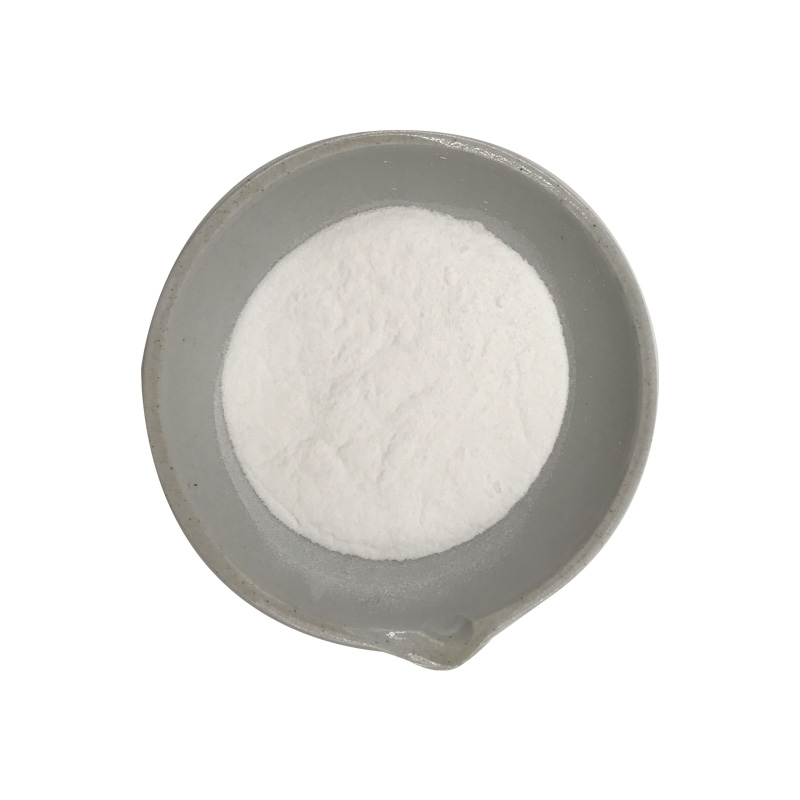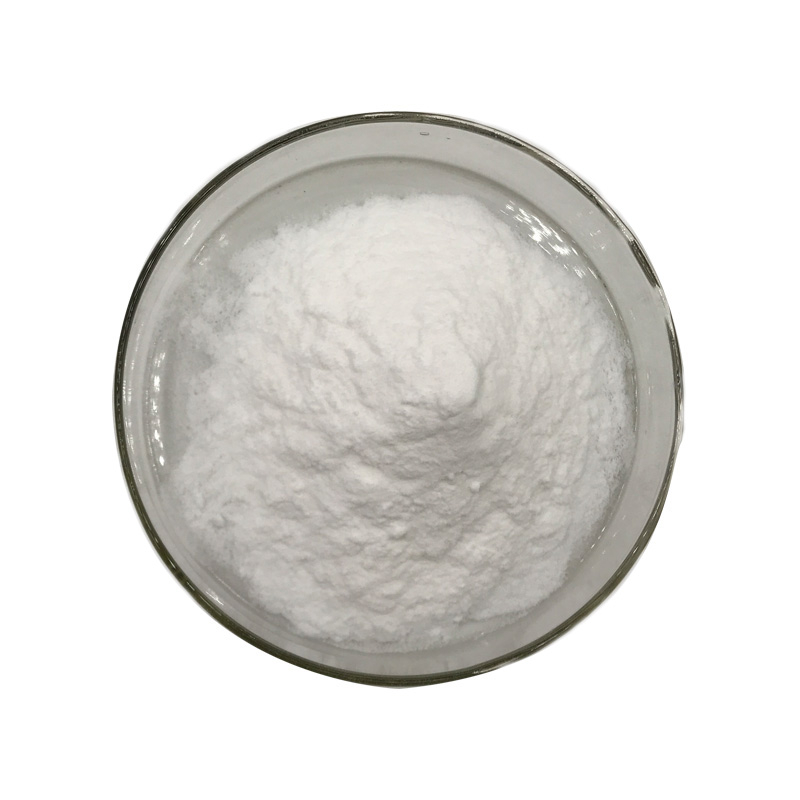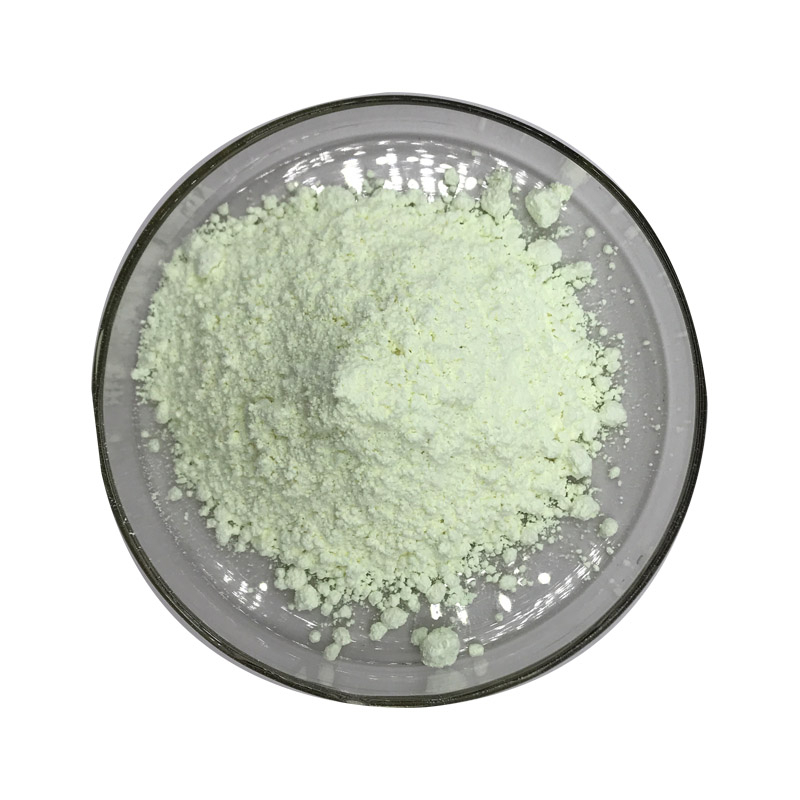Products Description of Dextrin CAS#9004-53-9White amorphous powder, odorless, slightly sweet taste.Dextrin Chemical PropertiesMelting point 53.75-54 °Cdensity 0.8 g/cm3storage temp. Store at RT.solubility H2O: 0.1 g/mL hot, complete, yellow to very deep yellowform powdercolor yellowOdorodorlessWater Solubility Soluble in hot water (0.1 g/ml).Sensitive HygroscopicMerck 14,2953Dielectric constant2.2(Ambient)Stability:Stable. Combustible.
Contacta ahora
Products Description of Cadmium oxide CAS#1306-19-0Cadmium oxide is an oxide of cadmium with the molecular formula CdO, which is carcinogenic. Cadmium oxide can dissolve in acid to form Cd[H2O]62+; it can also dissolve in alkali to form [Cd(OH)4]2??.Cadmium oxide Chemical PropertiesMelting point 900°CBoiling point 1385 °Cdensity 8.15 g/mL at 25 °C(lit.)storage temp. Store below +30°C.solubility 0.0021g/lform powdercolor brownSpecific Gravity8.15OdorOdorlessPH9-10 (H2O)(aqueous suspension)Water Solubility insoluble.
Contacta ahora
Products Description of BISMUTH SULFIDECAS#1345-07-9Bismuth sulfide is brown-yellow powder or crystal, with a specific gravity of 7.39. It decomposes at 685℃. It is insoluble in water and ethyl acetate, but soluble in nitric acid and hydrochloric acid.BISMUTH SULFIDE Chemical PropertiesMelting point 685°C (dec.)density 7.7 g/mL at 25 °C(lit.)solubility insoluble in H2O; soluble in acid solutionsform LumpSpecific Gravity7.7color GrayWater Solubility Insoluble in water.
Contacta ahora
Products Description of L-GLUCOSE CAS#921-60-8L-glucose is the enantiomer of D-glucose, a naturally occurring carbohydrate used in numerous cellular processes.L-GLUCOSE Chemical PropertiesMelting point 153-156 °C(lit.)Boiling point 232.96°C (rough estimate)density 1.2805 (rough estimate)refractive index -52 ° (C=5, H2O)storage temp. 2-8°Csolubility H2O: 0.1 g/mL, clear, colorlessform aqueous ethanol solutionpka12.45±0.20(Predicted)color WhiteWater Solubility Soluble in water, alcohol.Merck 14,4459BRN 1724626Stability:Stable.
Contacta ahora
Products Description of Tetrabutyl ammonium chloride CAS#1112-67-0Tetrabutylammonium chloride is a chemical substance with the chemical formula C16H36ClNTetrabutyl ammonium chloride Chemical PropertiesMelting point 83-86°Cdensity 0.98refractive index 1,421-1,423Fp >110°Cstorage temp. Store below +30°C.solubility H2O: 20 mg/mL, clear, colorlessform Crystalline Solidcolor White to brownishPH5-8 (100g/l, H2O, 20℃)PH Range5 - 8 at 100 g/l at 20°CWater Solubility SOLUBLESensitive Light Sensitiveλmaxλ: 220 nm Amax: 0.05λ: 230 nm Amax: 0.
Contacta ahora
Products Description of Ferric ammonium oxalate trihydrate CAS#13268-42-3Calcium and magnesium precipitants, electroplating industryFerric ammonium oxalate trihydrate Chemical PropertiesMelting point 161°C (rough estimate)density 1,78 g/cm3solubility very soluble in H2O; insoluble in ethanolform Crystalline Powdercolor GreenWater Solubility Very soluble in water. Insoluble in alcoholSensitive Light Sensitive & HygroscopicMerck 14,517Exposure limitsACGIH: TWA 1 mg/m3NIOSH: TWA 1 mg/m3Stability:May decompose upon exposure to light.
Contacta ahora
Products Description of Sodium hexafluorophosphate CAS#21324-39-0Sodium hexafluorophosphate is also called "sodium hexafluorophosphate (V) acid". Chemical formula NaPF6·H2O. Molecular weight 185.97. White powder. Sensitive to air and carbon dioxide, relative density 2.36919. Very soluble in water. Decomposes at high temperature.
Contacta ahora
Products Description of 1,3-Dimethylurea CAS#96-31-11,3-Dimethylurea, an organic chemical substance, CAS number: 96-31-1, molecular formula: C3H8N2O.1,3-Dimethylurea Chemical PropertiesMelting point 101-104 °C(lit.)Boiling point 268-270 °C(lit.)density 1.142vapor pressure 6 hPa (115 °C)refractive index 1.4715 (estimate)Fp 157 °Cstorage temp. Store below +30°C.solubility H2O: 0.1 g/mL, clear, colorlesspka14.57±0.46(Predicted)form Crystalscolor WhitePH9.0-9.5 (100g/l, H2O, 20℃)Water Solubility 765 g/L (21.5 ºC)BRN 17
Contacta ahora
Products Description of Guanidine carbonate CAS#593-85-1Guanidine carbonate is a chemical substance with the chemical formula C2H10N6H2CO3 and its appearance is a white crystalline powder.Guanidine carbonate Chemical PropertiesMelting point >300 °C(lit.)density 1.25vapor pressure 0Pa at 25℃storage temp. Store below +30°C.solubility 450g/lform Crystalline Powderpka12.5[at 20 ℃]color White to almost whitePH11.7 (110g/l, H2O, 20℃)Water Solubility 450 g/L (20 ºC)BRN 3628359InChIKeyKMSRVXJGTIRNNK-UHFFFAOYSA-NLogP-1.63 at 20℃CAS DataBase Refe
Contacta ahora
Products Description of Iridium(III) chloride hydrateCAS#14996-61-3Green crystals or brown powder, easily absorbs moisture, dissolves in water and hydrochloric acid, loses crystal water when exposed to strong heat.Iridium(III) chloride hydrate Chemical PropertiesMelting point 763°C (dec.)density 5.3 g/mL at 25 °C(lit.)storage temp. Inert atmosphere,Room Temperaturesolubility 623.82g/l solubleform Crystalscolor BlackPH<2 (H2O, 20℃)Aqueous solutionWater Solubility Soluble in water and alcohol.Merck 14,5088Stability:hygroscopicInChIIn
Contacta ahora
Products Description of Cetrimide CAS#8044-71-1Cetrimonium bromide is in the form of white or light yellow crystals or powder, easily soluble in isopropyl alcohol and water, produces a large amount of foam when shaken, has good compatibility with cationic, nonionic and amphoteric surfactants, and has excellent penetration, softening, emulsification, antistatic, biodegradability and bactericidal properties.Ctrimide Chemical PropertiesMelting point 245-250 °C(lit.)solubility H2O: 10 % (w/v)CAS DataBase Reference8044-71-1(CAS DataBase Reference)Safety InformationHazard Co
Contacta ahora
Dodecyltrimethylammonium Bromide Chemical PropertiesMelting point 246 °C (dec.)(lit.)density 1.1566 (rough estimate)vapor pressure 0Pa at 20℃refractive index 1.5260 (estimate)Fp 246°Cstorage temp. Store below +30°C.solubility H2O: 0.1 M at 20 °C, clear, colorlessform Powdercolor White to slightly yellowWater Solubility solubleSensitive Hygroscopicλmaxλ: 240 nm Amax: ≤0.2λ: 250 nm Amax: ≤0.03λ: 260 nm Amax: ≤0.02λ: 500 nm Amax: ≤0.02BRN 3597463InChIKeyXJWSAJYUBXQQDR-UHFFFAOYSA-MCAS DataBase Reference1119-94-4(
Contacta ahora
Products Description of 3,5-Dinitrosalicylic acid CAS#609-99-4Yellow flaky crystals. Melting point 173-174°C. Soluble in alcohol, benzene, ether, slightly soluble in water.3,5-Dinitrosalicylic acid Chemical PropertiesMelting point 168-172 °C (lit.)Boiling point 369.91°C (rough estimate)density 1.7914 (rough estimate)refractive index 1.5300 (estimate)storage temp. room tempsolubility H2O: soluble50mg/mLform Powderpka1.57±0.10(Predicted)color YellowPH Range1.3-1.8 (10g/L @ 20°C)Water Solubility solubleBRN 2220661Stability:Stable.
Contacta ahora
Products Description of Diammonium 2,2'-azino-bis(3-ethylbenzothiazoline-6-sulfonate)CAS#30931-67-0ABTS diammonium salt is a substrate for horseradish peroxidase (HRP).Diammonium 2,2'-azino-bis(3-ethylbenzothiazoline-6-sulfonate) Chemical PropertiesMelting point >181oC (dec.)storage temp. 2-8°Csolubility H2O: 50 mg/mL, very slightly hazy, greenform tabletcolor Pale Green to Light GreenPHpH(50g/l, 25℃) : 5.0~6.0Water Solubility Dissolve in water at 50mg/ml.
Contacta ahora
Products Description of Cetrimide CAS#8044-71-1Cetrimonium bromide is in the form of white or light yellow crystals or powder, easily soluble in isopropyl alcohol and water, produces a large amount of foam when shaken, has good compatibility with cationic, nonionic and amphoteric surfactants, and has excellent penetration, softening, emulsification, antistatic, biodegradability and bactericidal properties.Cetrimide Chemical PropertiesMelting point 245-250 °C(lit.)solubility H2O: 10 % (w/v)CAS DataBase Reference8044-71-1(CAS DataBase Reference)Safety InformationHazard C
Contacta ahora
Products Description of Ammonium dihydrogen phosphate CAS#7722-76-1Diammonium phosphate is a highly effective fertilizer widely used in vegetables, fruits, rice and wheat.Ammonium dihydrogen phosphate Chemical PropertiesMelting point 190 °C (dec.) (lit.)Boiling point 87.4 °Cdensity 1.02 g/mL at 20 °Cvapor pressure 0.066 hPa (125 °C)RTECS TC6587000storage temp. Inert atmosphere,Room Temperaturesolubility H2O: 0.1 M at 20 °C, clear, colorlessform SolidSpecific Gravity1.803color White or colorlessPH Range3.8 - 4.4PH3.
Contacta ahora
Products Description of 2-Dimethylaminoisopropyl chloride hydrochloride CAS#4584-49-0Hydrochloride salt of 2-Dimethylaminoisopropyl Chloride, used in the synthesis of analogues of lipophilic chalcones, which act as antitubercular agents.2-Dimethylaminoisopropyl chloride hydrochloride Chemical PropertiesMelting point 187-190 °C(lit.)storage temp. Store below +30°C.solubility 2000g/lform Crystalline Powdercolor White to light creamPH5-6 (500g/l, H2O, 20℃)Water Solubility 2000 g/L (20 º C)Sensitive HygroscopicBRN 3670215InChIInChI=1S/C5H12ClN.ClH/
Contacta ahora
Products Description of Tin sulfate CAS#7488-55-3White or light yellow crystalline powder. Soluble in water, solubility 33g/100ml water at 35℃. Soluble in dilute sulfuric acid.Stannous sulfate Chemical PropertiesMelting point 360 °Cdensity 4,15 g/cm3vapor pressure 0Pa at 20℃storage temp. no restrictions.form SolidSpecific Gravity1.35color White to off-whitePH1.6 (50g/l, H2O, 20℃)Water Solubility 330 g/L (20 ºC)Merck 14,8790Exposure limitsACGIH: TWA 2 mg/m3NIOSH: IDLH 100 mg/m3; TWA 2 mg/m3Stability:Stable, but moisture sensitive.
Contacta ahora
Paraffin, Liquid CAS#8012-95-1Mineral oil mist is a colorless, oily liquid aero-sol dispersed in air with an odor like burned lubricating oil.The odor threshold is 1.0 ppm. Specific gravity (H2O:1)=0.865 at 60℃; Boiling point = 250- 360*C; Vaporpressure = <0.5 mmHg at 20℃; Flash point= 193℃;Autoignition temperature = 260- 371℃. HazardIdentification (based on NFPA-704 M Rating System):Health 0, Flammability 1, Reactivity 0. Insoluble in water.Product Name:Paraffin, liquidSynonyms:PARAFFIN VISCID, EXTRA PURE, DAB, PH. EU R., B. P., PH.
Contacta ahora
Products Description of Chloramine B CAS#127-52-6Chloramine B hydrate is a white crystalline powder.Chloramine B Chemical PropertiesMelting point 190°CBoiling point 189℃[at 101 325 Pa]density 1.484[at 20℃]vapor pressure 0Pa at 20℃storage temp. Keep in dark place,Inert atmosphere,2-8°Csolubility H2O: 0.1 g/mL, clearform solidpka1.88[at 20 ℃]Water Solubility 0.1 g/mLMerck 14,2074BRN 3599287InChIKeyKDNCILYKSYKEFJ-UHFFFAOYSA-NLogP0.14 at 26℃EPA Substance Registry SystemChloramine B (127-52-6) Safety InformationHazard Codes CRisk
Contacta ahora
Products Description of Dinonylnaphthalenesulfonic acid CAS#25322-17-2Dinonylnaphthalenesulfonic acid is a chemical substance with the molecular formula C28H44O3S.Dinonylnaphthalenesulfonic acid Chemical PropertiesBoiling point 94-99 °Cdensity 0.852 g/mL at 25 °Crefractive index n20/D 1.465Fp 30 °Fstorage temp. 2-8°Csolubility H2O: insolubleCAS DataBase Reference25322-17-2(CAS DataBase Reference)EPA Substance Registry SystemNaphthalenesulfonic acid, dinonyl- (25322-17-2)Safety InformationHazard Codes F,Xn,NRisk Statements&nb
Contacta ahora
Methylcyclohexane CAS#108-87-2Methylcyclohexane, an alkene, is a colorless liquid with a faint benzene-like odor. The smell thre-shold is 630 ppm (this is above the OEL). Molecularweight = 98.21; Specific gravity (H2O:1)= 0.77; Boilingpoint = 101℃; Freezing/Melting point= - 127℃; Vaporpressure= 37 mmHg at 20℃; Flash point= - 3.9℃ (cc),- 5.9℃ (oc); Autoignition temperature = 258℃. Explosivelimits: LEL= 1.2%; UEL = 6.7%.
Contacta ahora
Products Description of (±)-Cloprostenol sodium salt CAS#55028-72-3(5Z)-rel-Cloprostenol Sodium Salt is the d-enantiomer of Cloprostenol, an aryl-oxymethyl analog of prostaglandin F2α.(±)-Cloprostenol sodium salt Chemical PropertiesMelting point 68-70 °Cstorage temp. Inert atmosphere,Store in freezer, under -20°Csolubility H2O: >10 mg/mLform solidcolor light brownInChIKeyIFEJLMHZNQJGQU-KXXGZHCCSA-MCAS DataBase Reference55028-72-3(CAS DataBase Reference)Safety InformationHazard Codes TRisk Statements 60-22-36/37/38Safety Statements 53-26
Contacta ahora
Products Description of 2-Methylpiperazine CAS#109-07-9Colorless crystals, hygroscopic, with a typical amine odor, easily soluble in water and acetone.2-Methylpiperazine Chemical PropertiesMelting point 61-63 °C (lit.)Boiling point 155 °C/763 mmHg (lit.)density 0.817 g/cmrefractive index 1.4378 (estimate)Fp 149 °Fstorage temp. Keep in dark place,Inert atmosphere,Room temperaturesolubility 435g/lpkapK1:5.62(+2);pK2:9.60(+1) (25°C)form Crystalline Powder, Crystals and/or Chunkscolor White to yellowPH11-12 (50g/l, H2O)Water Solubility 78
Contacta ahora

































